THE FLORIDA STATE UNIVERSITY
COLLEGE OF MUSIC Presents THE UNIVERSITY
SYMPHONY ORCHESTRA
Alexander Jiménez, Music Director and Conductor
Sebastián Jiménez, Graduate Associate Conductor
Tour Preview Concert
featuring Shannon Thomas, Violin
2023 Spring Tour Dates:
March 6 | Riverview Performing Arts Center
Sarasota, FL
March 7 | Steinmetz Hall
Dr. Phillips Performing Arts Center, Orlando, FL
March 10 | Gran Teatro del Cibao
Santiago, Dominican Republic
Saturday, February 25, 2023
Seven-thirty in the Evening
Ruby Diamond Concert Hall
Supporting theArts 850-894-8700 www.beethovenandcompany.com 719 North Calhoun Street, Suite E Tallahassee, Florida 32303 Tom Buchanan, owner
Don Juan, Op. 20
Violin Concerto No. 2
Embrujao for String Orchestra (2020)
Variations on an Original Theme, Op. 36 “Enigma”
Elgar Theme (Enigma; Andante)
Variation I. (Lístesso tempo) “C.A.E.”
Variation II .(Allegro) “H.D.S-P.”
Variation III. (Allegretto) “R.B.T.”
Variation IV. (Allegro di molto) “W.M.B.”
Variation V. (Moderatro) “R.P.A.”
Variation VI. (Andantino) “Ysobel”
Variation VII. (Presto) “Troyte”
Variation VIII. (Allegretto) “W.N.”
Variation IX. (Adagio) “Nimrod”
Variation X. (Intermezzo: Allegretto) “Dorabella”
Variation XI. (Allegro di molto) “G.R.S.”
Variation XII. (Andante) “B.G.N.”
Variation XIII. (Romanza: Moderato) “***”
Variation XIV. (Finale: Allegro) “E.D.U.”
Please refrain from talking, entering, or exiting while performers are playing. Food and drink are prohibited in all concert halls. Please turn off cell phones and all other electronic devices. Please refrain from putting feet on seats and seat backs. Children who become disruptive should be taken out of the performance hall so they do not disturb the musicians and other audience members.
PROGRAM
Richard Strauss (1864–1949)
Florence
Price (1887–1953) Shannon Thomas, violin Intermission
Fabián Harbeith Roa (b. 1984) Sebastián Jiménez, conductor
Edward
(1857–1934)
ABOUT THE CONDUCTORS
Alexander Jiménez serves as Professor of Conducting, Director of Orchestral Activities, and String Area Coordinator at the Florida State University College of Music. Prior to his appointment at FSU in 2000, Jiménez served on the faculties of San Francisco State University and Palm Beach Atlantic University. Under his direction, the FSU orchestral studies program has expanded and been recognized as one of the leading orchestral studies programs in the country. Dr. Jiménez has recorded on the Naxos, Neos, Canadian Broadcasting Ovation, and Mark labels. Deeply committed to music by living composers, Dr. Jiménez has had fruitful and longterm collaborations with such eminent composers as Ellen Taafe Zwilich and the late Ladisalv Kubik, as well as working with Anthony Iannaccone, Krzysztof Penderecki, Martin Bresnick, Zhou Long, Chen Yi, Harold Schiffman, Louis Andriessen, and Georg Friedrich Haas. The University Symphony Orchestra has appeared as a featured orchestra for the College Orchestra Directors National Conference and the American String Teachers Association National Conference, and the University Philharmonia has performed at the Southeast Conference of the Music Educators National Conference (now the National Association for Music Education). The national PBS broadcast of Zwilich’s Peanuts’ Gallery® featuring the University Symphony Orchestra was named outstanding performance of 2007 by the National Educational Television Association.
Active as a guest conductor and clinician, Jiménez has conducted extensively in the U.S., Europe, and the Middle East, including with the Brno Philharmonic (Czech Republic) and the Israel Netanya Chamber Orchestra. In 2022, Dr. Jiménez led the Royal Scottish National Orchestra in a recording of works by Anthony Iannaccone. Deeply devoted to music education, he serves as international ambassador for the European Festival of Music for Young People in Belgium and serves as Festival Orchestra Director and Artistic Director for the Blue Lake Fine Arts Camp in Michigan. Dr. Jiménez has been the recipient of University Teaching Awards in 2006 and 2018, The Transformation Through Teaching Award, and the Guardian of the Flame Award which is given to an outstanding faculty mentor. Dr. Jiménez is a past president of the College Orchestra Directors Association and served as music director of the Tallahassee Youth Orchestras from 2000-2017.

Colombian conductor Sebastián Jiménez currently serves as Associate Conductor of the Florida State University Symphony Orchestra. Jimenez, a second-year master’s student in Orchestral Conducting at FSU, has previously been Assistant Conductor and later Acting Principal Conductor of the Florida State University Philharmonia. He graduated from the Pontifical Xavierian University in Bogota, Colombia, where he received a B.M. in both Orchestral Conducting and Piano Performance.
As a conductor, Jiménez has been mentored by Andrés Orozco-Estrada, having conducted the Colombia Youth Philharmonic and assisting him in rehearsals with the Houston Symphony and the Boston Symphony. He has also been a student of Mark Shapiro, Miguel Harth-Bedoya and Alexander Jiménez, the latter being his current professor. He has conducted orchestras in Europe, the United States and Colombia, including the Moravian Philharmonic, the Dubrovnik Symphony, the Berlin Sinfonietta, the LSU Symphony and the Javeriana Symphony, and is scheduled to lead the Filarmónica de Cali as Guest Conductor in early 2023.
He has been recently named a 2023 Carlos Miguel Prieto Conducting Fellow, which will allow him to study under Prieto, Marin Alsop and Leonard Slatkin.
In early 2022 he was accepted as a Conducting Fellow at the Mostly Modern Festival with JoAnn Falletta. In May of the same year, he was appointed Music Director of the Summer Opera 2022 at FSU.
An advocate for Latin American Music, Jiménez is committed to the exposure of music by underrepresented Latin American composers. Over the summer of 2022 he conducted a production of Rigoletto in the Netherlands, and currently serves as assistant conductor for the FSU Fall and Spring opera productions.
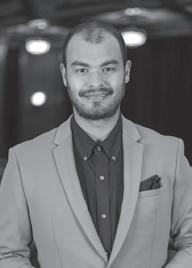
ABOUT THE FEATURED SOLOIST
Tennessee native Shannon Thomas has garnered a reputation for thoughtful performances as a chamber musician, soloist, and in recital throughout North and South America, Europe, and Asia. Recent performing engagements have taken her to the Kennedy Center, Spoleto Festival USA, Bolivia’s Centro Sinfonico in La Paz, and the Banff Centre where she has collaborated with distinguished artists such as Midori, St. Lawrence String Quartet, David Halen, WendyChen, and Anita Pontremoli. Shannon has appeared at Garth Newel Music Center, Sarasota Music Festival, Kneisel Hall, Aspen Music Festival, with the Bryant Park Chamber Players in NYC, ProMusica Chamber Orchestra, and IRIS Orchestra under the direction of Michael Stern. Shannon has recorded for Blue Griffin, most recently releasing a CD celebrating the music of Lera Auerbach, Ellen Zwilich, and Jennifer Higdon.
Sharing her enthusiasm for the arts through teaching, Shannon is a highly sought-after pedagogue. She currently serves as Associate Professor of Violin at Florida State University and gives masterclasses throughout the United States and abroad. This summer, Shannon will be teaching and performing at Green Mountain Chamber Music Festival, the Richard Luby International Violin Symposium, Hilton Head Chamber Music Institute, Emerald Coast Chamber Music Festival, and Brancaleoni International Music Festival in Italy.
Previously on the faculties of University of Southern Mississippi, the Cleveland Institute of Music Preparatory Division, Interlochen Arts Camp, Kinhaven Music School, and Innsbrook Institute Summer Music Academy and Festival, her students have been prizewinners and finalists at national and international competitions. She is cofounder and co-artistic director of MusicBridges Tallahassee, a non-profit that provides opportunities for youth to succeed through the power of music and diversity.
Shannon earned the DMA from the Cleveland Institute of Music, where she was Paul Kantor’s assistant; she also holds degrees from Yale University and Vanderbilt University. She studied chamber music with Peter Salaff, Laurie Smukler and members of the Juilliard, Tokyo, Blair, and Cavani String Quartets. Her principal teachers included Cornelia Heard, Paul Kantor, Robert Lipsett, and Ani Kavafian.
Follow her on Instagram: @shannonthomasviolin

NOTES ON THE PROGRAM
Strauss: Don Juan, Op. 20
The title “Don Juan” at first glance, hardly seems the subject matter for serious thought. Originally surfacing in literature of the seventeenth century, the character Don Juan has been portrayed in different ways by numerous writers and musicians, including Moliere, Mozart, Byron, Dumas, and Liszt. Although each presents their Don Juan figure in various ways, the core nature of the character has remained the same. Even today the title “Don Juan” refers to someone who is a seducer, a womanizer, a heartbreaker, or in modern terms, a “player.”
Strauss’s Don Juan, however, is not all about frolicsome flirtation. To help us understand the piece, Strauss affixed a poem by Nicolaus Lenau. The Hungarian born Lenau began writing Don Juan in 1844, but he never finished it due to an emotional breakdown leading to institutionalization until his death. The poem portrays the mindset of a seducer who avidly pursues numerous women, never content with just one relationship. He is, however, betrayed by his vain sexual quests. His seeking for lasting pleasure through transient pursuits eventually results in his being devoid of any pleasure. In the end, he is depleted and devoid of all passion. He has been consumed by his obsession.
The music of Don Juan follows this path of conquest and despair. It begins dramatically with an exuberant and confidant-sounding theme. This opening theme eventually succumbs to more intimate lyricism, which gradually builds in passion. Near the height of this passion the music unexpectedly turns to dissatisfaction. This cycle occurs several more times, each beginning with a renewed sense of conquest. At one point a theme presented by the horns presents an aura of even greater confidence and machismo than the opening theme, and later the opening material returns in full force. In each case, though, these grandiose statements dissipate with a sense of dissolution, and in the end when on the cusp of a fervid climax the music suddenly stops, and all passion fades as embers turn to ash.
– Paul Moulton
Price: Violin Concerto No. 2
In 2009, Vicki and Darrell Gatwood began renovations on an old and dilapidated home 70 miles outside of Chicago, Illinois. They found, to their surprise, a large collection of books, sheet music, and manuscripts with the name “Florence Price” all over them. After doing a bit of research, they discovered that Price was a composer from the Chicago area, and they contacted archivists at the University of Arkansas. Among the pile of unknown works was Price’s Violin Concerto No. 2.
Florence Beatrice Price was born in Little Rock, Arkansas in 1887 to a real estate agent and dentist. She was part of a neighborhood in Little Rock made up of a small group of middle-class African Americans during the post- Civil War reconstruction. At the same time, however, the newly acquired rights of African Americans were being systematically destroyed through the passage of Jim Crow laws. Her parents, well aware of the effects of Jim Crow, encouraged their daughter’s education. She left Little Rock and was one of two African American students to attend the New England Conservatory of Music, where she studied composition with the eminent American composer, George Chadwick, among others, and received degrees in organ performance and piano pedagogy.
In 1927 she moved to Chicago, a city that boasted not only an active classical music community, but an African American classical music community, as well. In 1932, she won the Wanamaker Competition’s symphony category and became the first African American woman to have a symphony performed by a major American orchestra. In 1933, under Fredrick Stock, the Chicago Symphony Orchestra premiered her Symphony in E Minor
The Violin Concerto No. 2 was completed in in 1952, one year before Price’s untimely death. Dedicated to violinist Minnie Jernberg, Price did not live to hear the work, which was premiered by Jernberg in 1955, accompanied by piano. It was not until after the discovery of the work in 2009 that the concerto was performed and recorded with orchestra in 2018. The work is in one movement consisting of three contrasting sections containing three principal themes that are transformed throughout the work. The work illustrates a mature compositional style mixing traditional compositional techniques with elements for spirituals and the Juba dance, all beautifully intertwined between the orchestra and soloist.
– Alexander Jiménez
Roa: Embrujao for String Orchestra
Fabián Roa is a Colombian composer born in the town of Málaga, Santander. In 2005, he began his composition studies in the Universidad Javeriana in Bogota under the mentorship of Guillermo Gaviria. In 2012, he moved to Uruguay to study History of Latin American Music and to further strengthen his compositional skills with Coriún Aharonián and Graciela Paraskevaídis.
Roa has obtained numerous awards, including the 2008 National Music Award of the Ministry of Culture of Colombia, and the 2009 Composition Award ‘Casa de las Américas’ in La Habana, Cuba, with his work for string quartet, Bestiario. During that same year, he was awarded the 1st prize in the Bogota Composition Competition and the Latin American Award ‘Bicentenario de la Independencia de Colombia.’
Roa’s music is described as being capable of transcending and communicating the expressivity of the Latin American soul. Outside of Colombia, his music has been performed in the United States, Spain, Finland, Cuba United and the Netherlands.
In 2019, the Banco de La República de Colombia commissioned Roa to make a recording in which he would explore writing for different formats. Embrujao is one of the works featured on the CD and it is a remarkably energetic work for strings and harp in which virtuosity, counterpoint and rhythmic syncopation are its main characteristics, while adhering to a tonal harmony with occasional explorations to other modes. It is inspired by the magic realism that lives in the tales and traditions in all ancient towns and is inspired by the song El Caporal y El Espanto by Juan Harvey Caicedo. It is a Joropo, one of the traditional rhythms and dances in Colombia and Venezuela. The dance is usually in 6/8 time and it is characterized by being fast, bold, audacious, lively, and joyful.
“Embrujar (To enchant or bewitch) is to create a force capable of attracting, to transform the enchanted state of mind.”
– Sebastián Jiménez
Elgar: Variations on an Original Theme, Op. 36 “Enigma”
Edward Elgar’s “Enigma Variations” premiered in 1899 under the baton of the worldrenowned Hans Richter. An immediate success, the work was performed throughout Europe and it became a staple of orchestral repertoire throughout the world. The Variations single-handedly catapulted England back into the international music conversation for the first time since the death of Henry Purcell in 1695 and provided the springboard for a simmering renaissance in English music.
Elgar, the son of a piano tuner, was not a man of nobility or family wealth. Neither did he study at one of England’s conservatories. Elgar was a man who enjoyed life’s simple pleasure including smoking cigars and playing chamber music with friends and neighbors. On one particular day, Elgar arrived home after giving piano lessons. To unwind, he sat down to improvise on the piano. His wife, Alice, commented that she liked a tune that emerged from his improvisation and Elgar responded by suggesting how some of their friends might play it. From this came the idea for a set of orchestral variations representing, as he said, “friends pictured within,” and the rest is history. The work remains one of the most loved and often performed works in the orchestral repertoire.
The question of an “enigma” has caused much spilt ink by scholars. To this day, there has not been a definitive answer to what Elgar’s enigma might be, although there have been countless attempts to divine an answer, but without success. Elgar, who was fascinated with ciphers and riddles, took the secret with him to the grave. Some suspect (as I do) that the “enigma” is that there is no enigma at all. Considering his humble background and, one can imagine, disdain for a certain academic attitude in music, his greatest joke may have been putting the musical world on an impossible search for all time. Even if this is not the answer, it is intriguing and somewhat satisfying for some of us.
The work features an opening theme (say the words “Edward Elgar” to the opening rhythmic motive) and fourteen variations, each representing a different friend and listed in the score by their initials. In all, fourteen people and a dog are featured in the variations:
I. C.A.E.: Elgar’s wife, Alice, lovingly portrayed;
II. H.D.S-P.: Hew David Steuart-Powell, a pianist with whom Elgar played in chamber ensembles;
III. R.B.T.: Richard Baxter Townshend, a friend whose caricature of an old man in an amateur theatre production is captured in the variation;
IV. W.M.B.: William Meath Baker, ‘country squire, gentleman and scholar’, informing his guests of the day’s arrangements by riding his bike and clanging the bell;
V. R.P.A.: Richard Arnold, son of the poet Matthew Arnold;
VI. Ysobel: Isabel Fitton, an amateur viola player from a musical family living in Malvern;
VII. Troyte: Arthur Troyte Griffith, a Malvern architect and close friend of Elgar throughout their lives - the variation focuses on Troyte’s limited abilities as a pianist;
VIII. W.N.: Winifred Norbury, known to Elgar through her association with the Worcestershire Philharmonic Society - the variation captures both her laugh and the atmosphere of her eighteenth-century house;
IX. Nimrod: A J Jaeger, Elgar’s great friend whose encouragement did much to keep Elgar going during the period when he was struggling to secure a lasting reputation - the variation allegedly captures a discussion between them on Beethoven’s slow movements
X. Dorabella: Dora Penney, daughter of the Rector of Wolverhampton and a close friend of the Elgars;
XI. G.R.S.: George Sinclair, organist at Hereford Cathedral, although the variation allegedly portrays Sinclair’s bulldog, Dan, paddling in the river Wye after falling in;
XII. B.G.N.: Basil Nevinson, an amateur cellist who, with Elgar and Hew SteuartPowell, completed the chamber music trio;
XIII. ***: Most often thought to represent Lady Mary Lygon, a local noblewoman who sailed for Australia at about the time Elgar wrote the variation, which quotes from Mendelssohn’s Calm Sea and Prosperous Voyage. Recent research seems to support the notion that the use of asterisks rather than initials conceals the identity of Helen Weaver, Elgar’s fiancée for eighteen months in 1883/84 before she emigrated to New Zealand. While she was studying violin in Leipzig, on one of his visits to see her they attended a concert at the famed Gewandhaus and heard the aforementioned work by Mendelssohn;
IVX. E.D.U.: Elgar himself, Edoo being Alice’s pet name for him.
– Alexander Jiménez
Violin
University Symphony Orchestra Personnel
Alexander Jiménez, Music Director
Sebastián Jiménez, Graduate Associate Conductor
MaryKatherine Brown ‡
Gabriela da Silva Fogo
Tomasso Bruno
Angel Andres
Rebeca Masalles
Rosalee Walsh
Darrian Lee
Maria Mendez
Erika Sciascia
Alyssa Orantes
Masayoshi Arakawa
Violin II
Thomas Roggio*
Alessandro Capitano
Miranda Rojas
Mackenzie Nies
Stacey Sharpe
Michael Mesa
Tyler Tran
Barbara Santiago
Viola
Luiz Barrionuevo*
Jeremy Hill
Ahdiayah Horton
Joshua Singletary
Caroline Burns
Ana Laldin
Hunter Sanchez
Francesca Tavano
Margo Elder
Marina Akamatsu
Cello
Mitchell George*
Aric Lee
Angelese Pepper
Jenna Bachman
Marina Buruete-Diago
Katie Jo Gelasco
Arabella Schwerin
Grace Lege
Bass
Gene Waldron, III
Megan Baker
Chase Rowe
Nicholas Smentkowski
Alex Gay
Alejandro Bermudez
Harp
Isabelle Scott
Flute
Pamela Bereuter*
Kaitlyn Calcagino
Brenna Wiinanen
Piccolo
Brenna Wiinanen
Oboe
Noel Prokop-Seaton*
Luis Gallo Quitero
Nic Kanipe
Clarinet
Marissa Stanfill*
Renzo DeCarlo
Bassoon
Robert Alexander*
Josephine Whiteis
Contrabassoon
Abigail Whitehurst
Horn
Tarre Nelson*
Leslie Bell
Brianna Nay
Cory Kirby
Trumpet
Madison Barton
Vito Bell
Angela King
Jeremy Perkins
Trombone
Will Roberts*
Jonah Zimmerman
Justin Hamann
Tuba
Chris Bloom
Percussion
Zach Harris*
Gustavo Barreda
Landon Holladay
Will Howald
Connor Willits
Orchestra Manager
Madeline Hoth
Librarians
Nathan Haines
Sebastián Jiménez
Miranda Rojas
Equipment Manager
Alejandro Bermudez
Administrative Assistant
Amanda Frampton
‡ Concertmaster * Principal

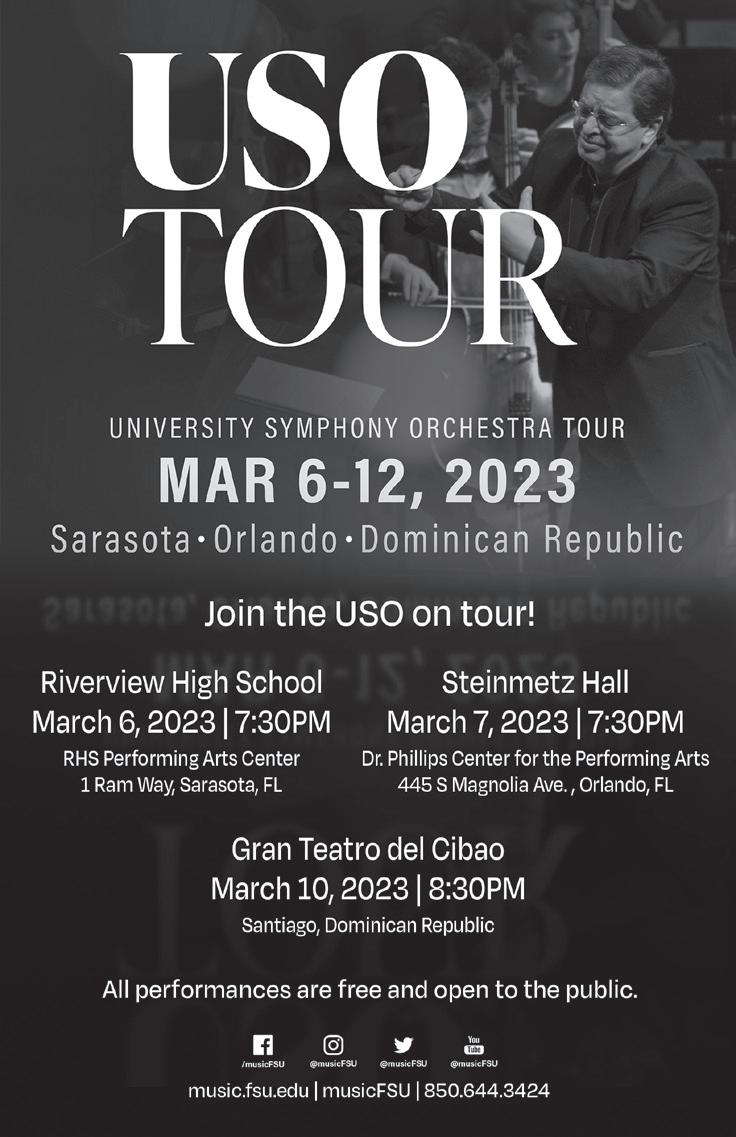

September 18, Bak & Chang, viola/piano
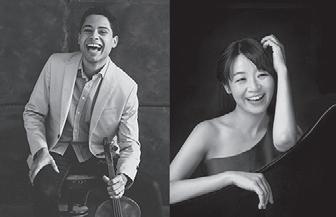
October 23, Dominic Cheli, piano
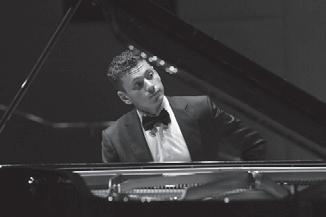
January 22, Sinta Quartet, saxophone

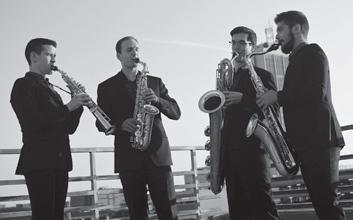
February 17, Jasper String Quartet, Valentine Fundraiser, 7 PM

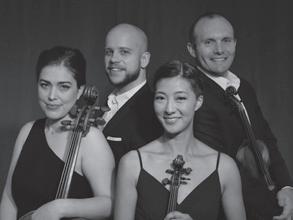
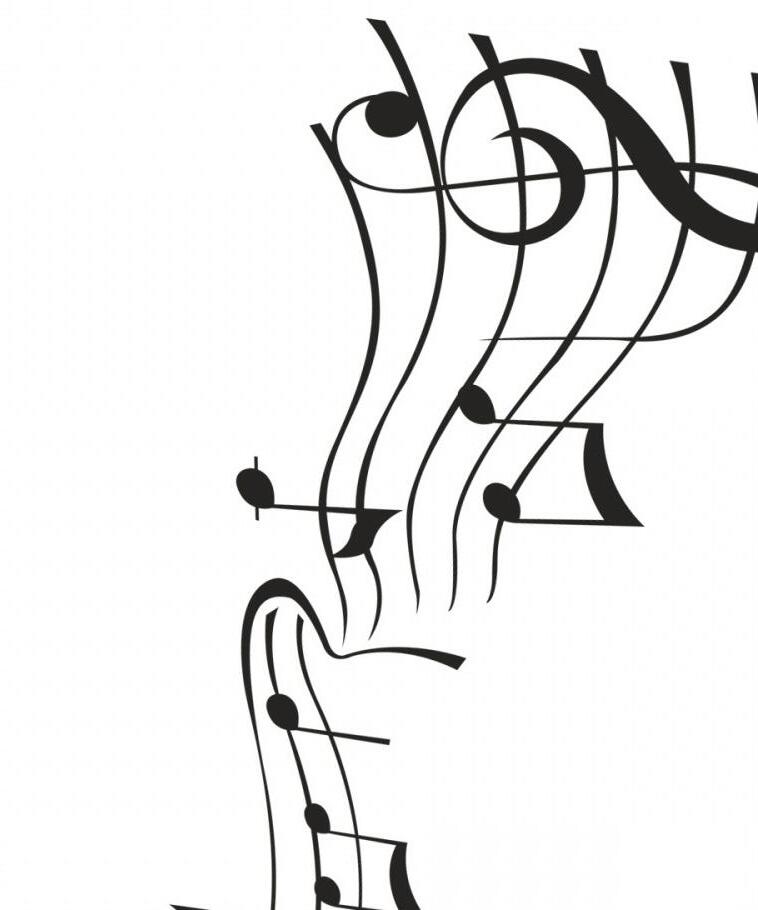
St. Peter’s Anglican Cathedral
March 5, Coro Vocati, vocal ensemble


May 7, Cuarteto Latinoamericano, string quartet
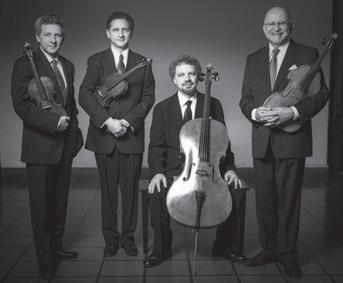
2022-23 Concert Season www.theartistseries.org 850-445-1616
4 PM
Hall Livestream & Video available
Live Concert,
Opperman
2022-2023 Concert Season
– Celebrating 35 Years of Song! –
FALL
Sunday, November 20 4:00 PM
Coronation Mass in C major, W.A. Mozart
*Tickets: tcchorus.org or call 850-597-0603

UNITY 16
Sunday, January 29 4:00 PM
“Repair The Future”
Weather, Rollo Dilworth, Poem by Claudia Rankine
Joined by The Florida A&M University Concert Choir
SPRING
Sunday, April 30 4:00 PM
Carmina Burana, Carl Orff
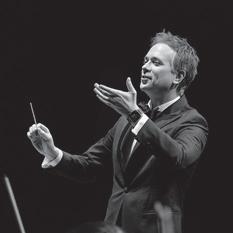

All performances in Ruby Diamond Concert Hall, The Florida State University

P hoto : C laire t imm P hotogra P hy
Michael Hanawalt, Artistic Director
Florida State University COLLEGE OF MUSIC
thanks to Les and Ruth Akers
special
Sole Sponsors of the UMA Concert Series
JOIN
THE UNIVERSITY MUSICAL ASSOCIATES TODAY!
For more than 30 years the University Musical Associates (UMA) has served as the patron group for the FSU College of Music performance programs. We support performances by our talented students and faculty both on the FSU campus and at prestigious events outside of Tallahassee. We also enhance the College and community by helping to bring in guest artists who are world-class performers and scholars. Join us as we return to the stage for the 2022-23 season by becoming a member and subscribing to the UMA Concert Series.
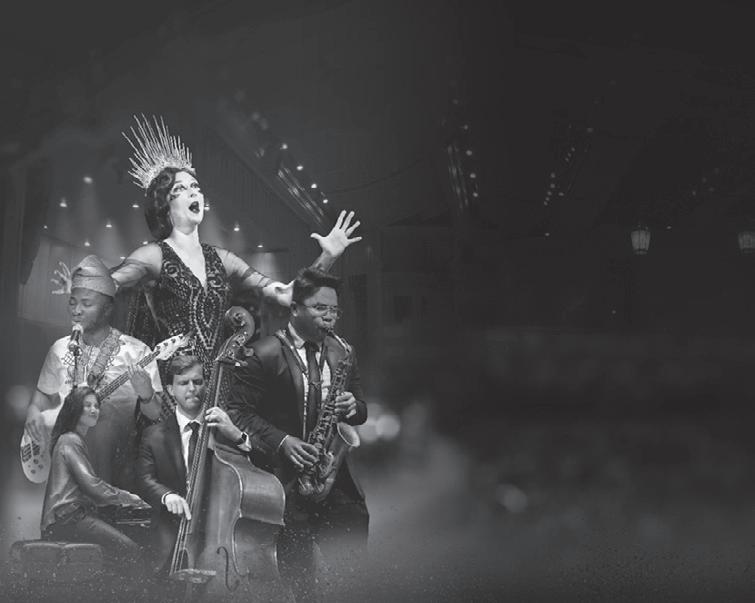
UNIVERSITY MUSICAL ASSOCIATES
2022-2023
Dean’s Circle
Jim and Betty Ann Rodgers
Mary and Glenn Cole
Margaret and Russ Dancy
Louie and Avon Doll
Patrick and Kathy Dunnigan
Gold Circle
Richard Dusenbury and Kathi Jaschke
Kevin and Suzanne Fenton
* Emory and Dorothy Johnson
Marty Beech
Kathryn M. Beggs
Greg and Karen Boebinger
* Karen Bradley
Donna Callaway
Dr. Kathryn Karrh Cashin
Brian Causseaux and W. David Young
Pete and Bonnie Chamlis
Jody and Nancy Coogle
Jim and Sandy Dafoe
Claire de Lune
Floyd Deterding and Dr. Kelley Lang
Jack and Diane Dowling
* Bonnie Fowler, Armor Realty
Joy and James Frank
William Fredrickson and Suzanne Rita Byrnes
Larry Gerber
John and Mary Geringer
Michael D. Hartline
Myron and Judy Hayden
* Marc J. and Kathryn S. Hebda
Dottie and Jon Hinkle
Todd S. Hinkle
Karolyn and Ed Holmes
* Paula and Bill Smith
Albert and Darlene Oosterhof
Bob Parker
Todd and Kelin Queen
Francis C. Skilling, Jr.
Bret Whissel
Marilynn Wills
Sustainer
Jonathan Jackson and Greg Springer
Alexander and Dawn Jiménez
Dr. Gregory and Dr. Margo Jones
Howard Kessler and Anne Van Meter
Michael Killoren and Randy Nolan
Dennis G. King, Esq.
Mr. and Mrs. T. Last
Dr. Annelise Leysieffer
Linda and Bob Lovins
Kay and Ken Mayo
Robert and Patty McDonald
Walter and Marian Moore
Ann Parramore
Thomas Gary Parrish
Dr. Evelyn Ploumis-Devick and David Devick
Mary Anne J. Price
* David and Joanne Rasmussen
* Ken and J.R. Saginario
Nell and Marshall Stranburg
William and Ma’Su Sweeney
* Alison R. Voorhees
Teresa White
Candy and Barbara Williams
Kathy D. Wright
Patron
Joyce Andrews
Mary S. Bert
Marcia and Carl Bjerregaard
Virginia W. and John L. Bryant
Joan and Kip Carpenter
Stacey Christian
Malcolm Craig
Rochelle Davis
William H. Davis
Jeannie Head Dixon
Judith Flanigan
John S. and Linda H. Fleming
L. Kathryn Funchess
Ruth Godfrey-Sigler
Bryan and Nancy Goff
Harvey and Judy Goldman
Dianne Gregory
Julie Griffith
Carole Hayes
Jerry and Bobbi Hill
Madeleine Hirsiger-Carr
Jane A. Hudson
Richard and Linda Hyson
Judith H. Jolly
Carolyn Jordan
Dean Kindley
* Jonathan Klepper and Jimmy Cole
Frances C. Kratt
Donna Legare
Dan MacDonald
William and Gayle Manley
Mary “Jo” Mansfield
Pat and Mike Meredith
Ann and Don Morrow
Dr. William C. Murray
Clyde and Sandra Palmer
Torrio Osborne and Marcía Porter
Karalee Poschman
Gloria Priest
Edward Reid
John and Carol Ryor
Paula Saunders
Scott Scearce
Betty Serow and Gigi Foster
Jeanette Sickel
Judy and Mike Stone
George S. Sweat
Marjorie Turnbull
Dr. Ralph V. Turner
Paul van der Mark
Sylvia B. Walford
Geoffrey and Simone Watts
Jeff Wright
Associate
Jayme Agee
Robert M. Bukovic
David and Mary Coburn
Carla Connors and Timothy Hoekman
Martha Cunningham
Dr. Aleksandra and Dr. Geoffrey Deibel
Pamala J. Doffek
John and Jodi Drew
The Fennema Family
Gene and Deborah Glotzbach
Laura Gayle Green
Miriam Gurniak
Donna H. Heald
Nicole and Kael Johnson
Joseph Kraus
DL LaSeur and Lennie Helfand
Alan and Marilyn Marshall
Kathleen and Lealand McCharen
Moncrief Flom Family
Sanford Safron
Sudarat Songsiridej and Mary Schaad
Mr. and Mrs. K. Scott Wagers
Karen Wensing
Drs. Heidi Louise and Christopher Williams
Lifetime Members
Les and Ruth Ruggles Akers
John and Willa Almlof
Florence Helen Ashby
Mrs. Reubin Askew
* Tom and Cathy Bishop
Nancy Bivins
Ramona D. Bowman
André and Eleanor Connan
Russell and Janis Courson
* J.W. Richard and Tina Davis
Ginny Densmore
Nancy Smith Fichter and Robert W. Fichter
Carole D. Fiore
Patricia J. Flowers
Jane E. Hughes
Hilda Hunter
Julio Jiménez
Kirby W. and Margaret-Ray Kemper
Patsy Kickliter
Anthony M. and Mallen E. Komlyn
Fred Kreimer
Beverly Locke-Ewald
Cliff and Mary Madsen
Ralph and Sue Mancuso
Meredith and Elsa L. McKinney
Ermine M. Owenby
Mike and Judy Pate
Jane Quinton
David D. Redfield
Laura and Sam Rogers, Jr.
Dr. Louis St. Petery
Sharon Stone
Donna Cay Tharpe
Brig. Gen. and Mrs. William B. Webb
Rick and Joan West
John L. and Linda M. Williams
Corporate Sponsors
Beethoven & Company MusicMasters Business Sponsors
WFSU Public Broadcast Center
*University Musical Associates Executive Committee
The University Musical Associates is the community support organization for the FSU College of Music. The primary purposes of the group are to develop audiences for College of Music performances, to assist outstanding students in enriching their musical education and careers, and to support quality education and cultural activities for the Tallahassee community. If you would like information about joining the University Musical Associates, please contact Kim Shively, Director of Special Programs, at kshively@fsu.edu or 850-644-4744.
The Florida State University provides accommodations for persons with disabilities. Please notify the College of Music at 850-644-3424 at least five business days prior to a musical event if accommodation for disability or publication in alternative format is needed.























